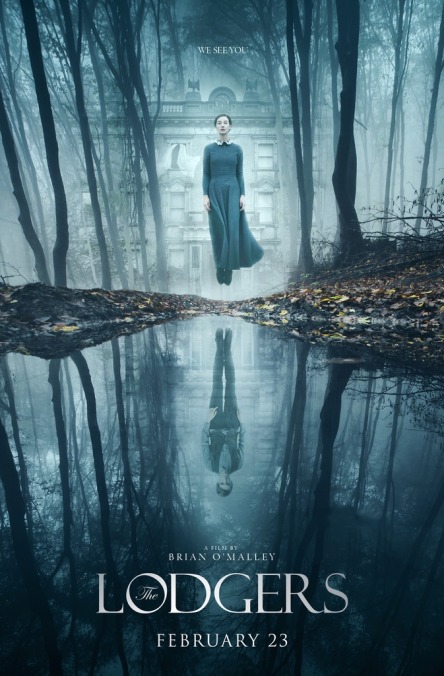Home is where the ghosts are in the moldy Gothic horror of The Lodgers

If you’ve got at your disposal a location as perfect as Loftus Hall—the 14th century manor home and self-proclaimed “most haunted house in Ireland”—it’d be a sin not to make a horror movie there. The ready availability of weathered old buildings and misty forests in rural Ireland is certainly an asset for The Lodgers, the second feature from Brian O’Malley (Let Us Prey). It’s a serviceable period ghost story that’s slight in story and not exactly subtle in themes, but contains a few genuinely striking images and atmosphere to spare.
Like many Gothic horror stories, the threat here is a domestic one: a curse passed down through the centuries to 18-year-old twins Rachel (Charlotte Vega) and Edward (Bill Milner), the last surviving members of a once-prosperous family. The twins live their lives by three immutable rules taught to them by their parents: Always be in bed by midnight, never let an outsider past the threshold of the family home, and never abandon the manor. It’s not much of a life at all, in other words, and Rachel bristles at its limitations. Unfortunately, every bend in the rules prompts a terrifying visit from the undead, waterlogged “Lodgers” who live underneath the floorboards of the house. But there’s another layer to the family curse that’s not covered in the singsong rhyme that’s repeated throughout the film, one that represents an even more nightmarish form of bondage for Rachel in particular. If you can’t figure out what that is just from the combination of outcast twins and Gothic horror, don’t worry: It’s telegraphed early and often.
A palpable weight hangs over The Lodgers. It’s there in the lush brocade canopy above the twins’ parents’ bed, the storm clouds pregnant with rain, the sometimes oppressive piano score, and the humorless, ponderously self-important dialogue. Even the makeup can be heavy-handed, as the Lodgers’ creeping takeover of Edward’s soul also includes quite a bit of contouring for that Tim Burton-esque “living corpse” look. This lack of subtlety is a plus in some ways; the production design and cinematography have a sodden, gloomy look that works especially well in a supernatural sequence reminiscent of a key scene in Dario Argento’s Inferno. In other ways, it’s a major downside, especially since the film’s obsession with the concepts of family and fate cause it to leave unexplored some other interesting themes, like the encroachment of the 20th century on the European aristocratic class. But while, as a ghost story, The Lodgers is about as original as “it was a dark and stormy night,” moldy old tropes can still have their charms. Just look at that house.